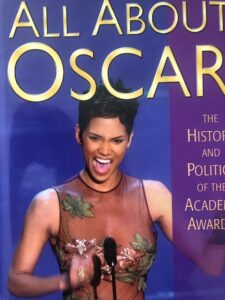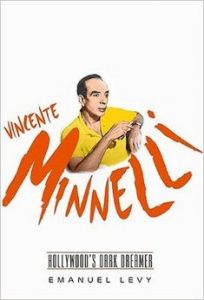Ira Gershwin, George’s brother, was persuaded to provide new lyrics and revised some old ones, as needed. Freed wanted Alan Jay Lerner, then Broadway’s brightest talent, to shape the narrative.
A Francophile, Minnelli identified completely with his hero, Jerry, an American painter in Paris. Arguably, no Hollywood director was as knowledgeable of French art as Minnelli. His work often sought to evoke the light and color of his admired French painters. American in Paris also had a sentimental value, a personal reminder of Minnellis friendship with the Gershwins.
Minnelli had the requisite taste and knowledge to execute a ballet that would become a kaleidoscopic collage, a brief history of French painting. It would run 17 minutes and cost half a million dollars, a staggering amount, basically the entire budget of a modest film. For the story, Lerner devised two romances. One between Jerry, an artist studying in Paris under GI Bill, and his patron, Milo Roberts, an older expatriate heiress interested in Jerry personally and professionally. The second romance is between Jerry and a young Parisienne, Lise Bourvier, with Jerry is unaware that Lise is the fiance of his friend, music hall star Henri Baurel; Henri had sheltered the orphaned Lise during the War. Minnelli thought that the story was uninspired, but there were other compensations, prime among which were Kelly’s dancing, Gershwins music, and the picturesque Parisian setting.
If you want to know more about Minnelli’s career and life, please read my book:
Jerrys caustic pal, pianist-composer Adam Cook, was tailored for Gershwin’s crony and Minnelli’s buddy, Oscar Levant. Levant played a Dave Diamond type, a perpetual expatriate composer living in Europe on the largesse of foundation fellowships. For the part of the older woman-patron Milo, Minnelli settled on Nina Foch. Henri Baurel was conceived as a comeback role for Maurice Chevalier after a long absence from the screen. However, the French star was dropped from consideration due to MGM’s fear of controversy about his alleged collaboration with the Nazis during the Occupation. Instead, Georges Guetray, a vet of French musicals, was chosen.
The main problem was finding the right actress to play Lise. Kelly remembered meeting a 17-year-old ballerina, Leslie Caron, whom he had seen on stage in a ballet. Kelly was then sent to Paris to conduct a test of Caron. When Kelly came back, the decision was positive, despite Carons lack of acting experience. Caron was offered a long-term contract that catapulted her to stardom.
Read about the Best Oscar Picture in Previous Year: All About Eve
Minnelli spent weeks with Freed, Kelly, Ira Gershwin, and Chaplin, looking for those George’s songs that would best fit Kelly’s choreography and Lerner’s script. Some songs carried special resonance. Our Love Is Here to Stay,” used as a romantic duet for Kelly and Caron, was Gershwin’s very last song, left incomplete by his death. And the mock Viennese, “By Strauss,” had been written for Minnelli’s last Broadway revue.
Caron was a decent dancer but she could not sing. Instead of performing with a borrowed voice, as was the custom, Minnelli decided to keep her silent during the musical interludes. He handled Caron’s scenes so sensitively that, when the movie was released, few critics noticed her lack of singing. American in Paris thus became the era’s only major musical to feature an all-male score.
Despite Minnellis disappointment of not going to Paris, shooting the film on the studio lot liberated its creative team, particularly in executing the complex ballet. The real city of Paris would have to wait until 1958, when Minnelli shot Gigi there. In designing a dreamlike Paris with lights and canvas, Minnelli relied on his bold imagination and art books. Like the paintings the movie evokes, Minnelli’s soundstages had a distilled magic about them.
American in Paris exemplified the virtues of the studio system, specifically, the cooperative coordination among the talent groups. Once completed by Ames, the designs were executed by George Gibson and Keogh Gleason. Minnelli’s regular collaborator, Jack Martin, devised the black and white scheme for the Beaux Arts Ball that precedes the ballet. Conrad Salinger orchestrated the score that had been assembled by Green and Chaplin.
What made the ballet special was Minnellis visual conception, which keyed each sequence to a different color scheme and architectural style. The segment was actually shot by Kelly, while Minnelli was busy with Fathers Little Dividend. Kelly’s choreography provided the basic movement, but it was Minnelli who turned it into a masterful whirlwind of color and movement, endowing the numbers with propulsive energy.
In the ballet, Minnelli conjures up the eloquence of silent film, using images for sensuality and emotion. The ballet broke records: For 17 minutes, not a single word was uttered, reflecting Minnellis long-standing belief that words presented unnecessary barriers between the images and the emotions they convey.
After the ballet, the fadeout is brief and anticlimactic. Jerry looks down the street as Lise descends from a taxicab, after bidding adieu to Henri. The lovers race into a stairway of 30 steps to paradise, with Kelly going downward as Caron goes upward. They embrace at mid-landing, before descending quickly together. In a final shot, Minnelli pans upward to a sapphire Paris skyline (as hell also do in a number of his melodramas (Some Came Running).
When American in Paris opened in July, the critics liked Gershwin’s music, Kelly’s innovative choreography, and Caron’s charm. Kelly wasn’t disappointed when he failed to earn a nomination. As he later noted: “There is a strange sort of reasoning in Hollywood that musicals are less worthy of Academy consideration than dramas. It’s a form of snobbism, the same sort that perpetuates the idea that drama is more deserving of Awards than comedy. Minnelli and Lerner resolve the film’s narrative before the ballet. It’s remarkable how quickly the film ends after the ballet. The camera follows a trail of cigarette smoke to a smoking face, revealing that Henri has overheard Jerry’s farewell to Lise. The final reunion of Jerry and Lise concludes the film after 17 minutes of pure visual imagery and music. Henri opens a taxi door, permitting Lise’s flight up the steps toward the racing Jerry. The painter finally grasps the rose.
The ballet’s duration of 16 minutes and 37 seconds is the culmination of all the frames, mirrors, and psychological projections that had preceded it. Some believed that the ballet was responsible for winning the Oscar. Moreover, after 1951, the ballet became a standard staple in the genre: No prestigious musical could do without a dance. However, in both concept and audacity, none of the other films ballets equals the dream ballet of American in Paris. Minnelli not only saw dancing within painting, but dancing through paintings. At times, it feels as if the paintings themselves dance. For Minnelli, the ballet was an American renewal of the spirit that produced Gershwins music in the first place. Gershwin, like a whole generation of American soldiers, went to Paris. The difference between them is that, unlike Gershwin, Jerry decided to stay in Paris to paint.
Cast:
Jerry Mulligan (Gene Kelly)
Lise Bourvier (Leslie Caron)
Adam Cook (Oscar Levant)
Henri Baurel (George Guetary)
Milo Roberts (Nina Foche)
George Mattieu (Eugene Borden)
Mathilde Mattieu (Martha Bamattre)
Therese (Ann Codee)
Francois (George Davis)
Tommy Badwin (Hayden Rorke)
John McDowd (Paul Maxey)
Ben Macrow (Dick Wessel)
Credits
Produced by Arthur Freed
Screenplay: Alan Jay Lerner, based on his story
Cinematography: Alfred Gilks
Ballet Cinematography: John Alton
Art Direction: Cedric Gibson, Preston Ames
Set Decoration: Edwin B. Willis; Keogh Gleason
Music: George Gershwin
Musical direction: Johnny Green, Saul Chaplin
Orchestrations: Conrad Salinger
Choreography: Gene Kelly; assistant Carol Haney
Lyrics by Ira Gershwin: “I Got Rhythm,” Embraceable You,” “S’ Wonderful,” “Nice Work If We Can Get it,” “By Strauss,” “Tra-La-La,” “Our Love Is Here to Stay,” “Concero in F,” “Liza,” “I Don’t Think I’ll Fall in Love Today,” “Ridin’ My Time,” “How Long Has This Been Going On?” “I’ll Build a Stairway to Paradise” (lyrics by E. Goetz and B. G. DeSylva).
Editing: Adrienne Fazan
Montage Sequences: Peter Basllbusch
Special Effects: Warren Newcombe, Irving Ries
Costumes: Orry-Kelly.
Beaux Arts Ball Costumes: Walter Plunkett
Ballet Costumes: Irene Sharaff
Technicolor direction: Henri Jaffa, James Gooch
Recording Direction: Douglas Shearer
Hair: Sydney Guilaroff
Makeup: William Tuttle
Gene Kelly’s paintings: Gene Grant
Running Time: 113 Minutes












